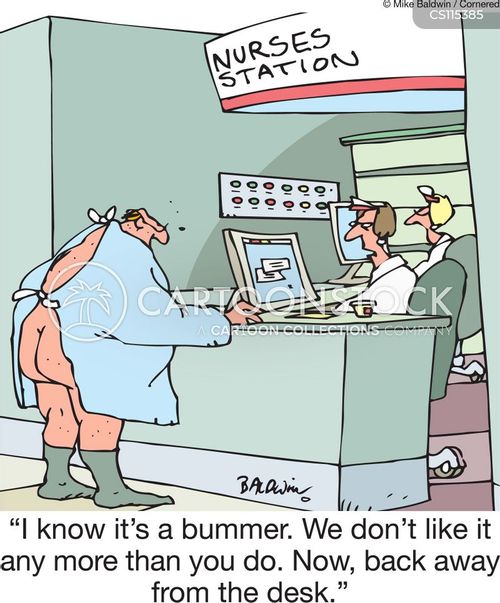Recognizing Vulnerability
"Often the patient is lying in a bed, so you're several feet above them looking down. And then you put them in this gown and you take away their clothes, and it's almost like they're wearing this orange prison jumpsuit."
"There are a whole bunch of things that happen in a hospital that change the power dynamic."
Dr. Todd Lee, internal medicine specialist, Royal Victoria Hospital, Montreal
"It's a tremendous indignity. It puts people into their place: 'You're the patient and we're the providers'."
" ... If you're in that kind of position, it's very hard to say your piece."
Dr. Sholom Glouberman, head, Patients Canada

It is humbling, to say the least, for anyone who ordinarily enjoys good health and the confidence that accompanies independence, to suddenly look for aid and comfort from the medical community, and the first thing that is done on admission to hospital, is to be ordered to shed the clothing that reflects your independent agency, and be given in its place, the anonymity conferred with the donning of an open-backed smock, shapeless and drafty; casually embarrassing; individuality and independence removed in one fell swoop.
Even health professionals find themselves in such situations; anyone and everyone is vulnerable to ill health, transitory or chronic. A diagnosis is made, verification of the state of health or sudden/gradual lack of complete health, and a protocol is worked out to ameliorate the situation, during which time the afflicted individual feels like a hapless mendicant, anxious for the nightmare to be resolved, and good health, or what will thereafter pass for it, to be resumed.
Perhaps it was the experience of health personnel themselves, thoughtfully introspective after being held to wear the same revealing garments as their patients, that brought some to become advocates, after making the effort to question the received wisdom of such hospital conventions. Most one-time patients who experienced the effect on themselves of having to wear hospital gowns likely would compare them not to prison uniforms but the little one-piece 'onesies' that infants are dressed in, making access to their nether parts for diaper changes more accessible.

Fotolia Hospitals
should avoid insisting on gowns when possible, say the physicians
behind a small study, citing evidence that they undermine the dignity of
patients in the health-care hierarchy.
Researchers in Montreal and Toronto conducted surveys at five hospitals of patients' opinion of the convention of hospital gowns on admission for surgery or any number of procedures necessitating hospital stays. Their finding was that the greater majority of hospital stays could well have proceeded with no need whatever for patients to shed their normal clothing for the ubiquitous hospital gown. Moreover, their study confirmed evidence exists that the use of the gowns undermine dignity, emphasizing patients' cipher-place in the health-care system.
As far as Dr. Glouberman is concerned, he considers the use of the hospital gown a "power trip" imposed by the health-care system to stress just how dependent the patient becomes when ill health forces them to seek the aid of a multitude of health care workers, and to conform to expectations within the institutions, removing self from the equation, hanging hopefully on the revelations from on high within the medical community.
On the other side of the equation, there's the practicality of the universality of one garment, shapeless and simple, at a modest cost to procure for the health care establishment. The garment is designed to make it simple for health care professionals to swiftly gain access to much of the patient's body. And in many instances it makes good sense to use such a garment. But its universal, all-purpose use belies common sense, when swift access is not an issue, and when in fact, many procedures on peripheral body parts are accessed at ease without the use of a particular hospital garment.
The study,published in the Journal of the American Medical Association, resulted from Dr. Lee and colleagues from two Montreal and three Toronto hospitals, interviewing 127 patients to solicit their opinions, on the same day but in different hospital departments. In the opinion of doctors treating these patients, 57% would be considered by them able to wear lower body garments, the stated preference of almost all the patients interviewed. But of the 127 patients interviewed a mere 11% wore such garments.
The same journal had earlier in the year published another paper, co-authored by Dr. Allan Detsky of Toronto, and a health-policy expert, suggesting another reason to change the protocols for patient dress is that the flimsy gowns are a contributing factor to "post-hospital syndrome"; the occasioning of stresses that can land patients back into treatment.
In the opinion of Dr. Detsky and his co-author Harlan Krumholz of Yale University, use of personal clothing "would help people maintain their self-esteem and orientation and would also remind their care professionals to recognize them as people."
Labels: Canada, Health, Medicine, Social Welfare

0 Comments:
Post a Comment
<< Home